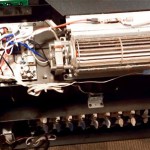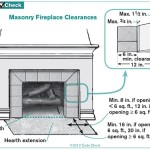Modern Freestanding Wood Fireplaces: A Fusion of Function and Design
Freestanding wood fireplaces, once relegated to rustic cabins and traditional homes, have undergone a significant transformation. Modern designs embrace sleek lines, innovative materials, and enhanced functionality, making them a compelling heating solution and a striking design feature for contemporary interiors. This article explores the key aspects of modern freestanding wood fireplaces, examining their advantages, design considerations, and installation requirements.
Enhanced Aesthetics and Design Versatility
One of the most significant advantages of modern freestanding wood fireplaces is their enhanced aesthetic appeal. Traditional models often prioritized function over form; however, contemporary designs prioritize both. Manufacturers now offer a wide range of styles, from minimalist, cylindrical shapes to more angular, geometric forms, ensuring a suitable option for diverse architectural styles. Finishes vary widely, including matte black, brushed steel, and enameled surfaces, allowing for seamless integration with existing décor.
The design versatility extends beyond mere aesthetics. Many modern models incorporate large glass viewing areas, maximizing the visual impact of the fire and transforming the fireplace into a captivating focal point. These glass panels are typically treated with advanced technologies to remain clean and clear, ensuring an unobstructed view of the flames. Furthermore, some designs incorporate storage compartments for firewood, adding a practical and visually appealing element.
The minimalist aesthetic often associated with modern design emphasizes clean lines and a lack of unnecessary ornamentation. This translates into fireplaces that are unobtrusive yet elegant, blending seamlessly into the surrounding environment. They are designed to complement rather than dominate the space, contributing to a sense of calm and sophistication.
Beyond the minimalist aesthetic, other modern designs incorporate bolder, more sculptural forms. These fireplaces become works of art in their own right, adding a unique and dramatic element to the room. The choice of materials, such as cast iron, steel, and even concrete, further contributes to the diverse design possibilities.
Improved Efficiency and Environmental Considerations
Modern freestanding wood fireplaces are not only aesthetically pleasing but also significantly more efficient than older models. Technological advancements in firebox design, air circulation, and combustion control have resulted in fireplaces that burn wood more cleanly and efficiently, reducing emissions and maximizing heat output.
One key improvement is the incorporation of secondary combustion systems. These systems introduce preheated air into the firebox to burn off leftover gases and particles that would otherwise escape into the atmosphere as smoke. This process significantly reduces emissions of harmful pollutants and increases the overall efficiency of the fireplace.
Many modern fireplaces are certified by organizations like the EPA (Environmental Protection Agency) in the United States, signifying that they meet stringent emission standards. Choosing an EPA-certified model is crucial for minimizing environmental impact and ensuring compliance with local regulations.
Furthermore, advancements in insulation and heat exchanger technology have improved the ability of modern fireplaces to efficiently transfer heat into the room. This means that less wood is required to achieve the desired temperature, resulting in lower fuel costs and a reduced carbon footprint. Some models even incorporate features like thermostats and programmable timers, allowing for precise temperature control and further optimizing efficiency.
Beyond efficiency, the sustainability of wood as a fuel source is an important consideration. When sourced from sustainably managed forests, wood can be a carbon-neutral fuel, as the carbon dioxide released during combustion is offset by the carbon dioxide absorbed by the trees during their growth. Choosing sustainably sourced wood is essential for minimizing the environmental impact of wood-burning fireplaces.
Installation and Maintenance Considerations
Installing a modern freestanding wood fireplace requires careful planning and adherence to building codes and safety regulations. While a freestanding model offers greater flexibility in terms of placement compared to a built-in fireplace, proper installation is still essential for ensuring safe and efficient operation.
A key consideration is the chimney system. The chimney must be properly sized and constructed to ensure adequate drafting and prevent the build-up of creosote, a flammable substance that can lead to chimney fires. A qualified professional should be consulted to determine the appropriate chimney system for the specific fireplace model and the architectural characteristics of the home.
Building codes typically require a non-combustible hearth pad beneath the fireplace to protect the flooring from heat and embers. The size and material of the hearth pad will vary depending on the fireplace model and local regulations. Adequate clearances to combustible materials, such as walls and furniture, must also be maintained to prevent fire hazards.
Regular maintenance is essential for ensuring the safe and efficient operation of a wood fireplace. This includes regular chimney sweeps to remove creosote build-up, inspections of the firebox and chimney for damage, and proper disposal of ashes. A qualified chimney sweep can provide expert advice on maintenance procedures and identify any potential problems.
The type of wood burned also significantly impacts the performance and longevity of the fireplace. Seasoned hardwood, such as oak or maple, burns hotter and cleaner than softwood, such as pine. Burning wet or unseasoned wood can lead to excessive creosote build-up and reduced efficiency. It is important to only burn dry, seasoned wood that is appropriate for the fireplace model.
The cost of installation can vary significantly depending on the complexity of the project, the type of chimney system required, and the location of the fireplace. Obtaining quotes from multiple qualified contractors is essential for ensuring a fair price and a professional installation. In addition to the initial installation cost, ongoing expenses such as chimney sweeps and fuel costs should also be factored into the overall budget.
In conclusion, modern freestanding wood fireplaces offer a compelling combination of aesthetic appeal, efficiency, and environmental responsibility. By carefully considering design options, installation requirements, and maintenance needs, homeowners can enjoy the warmth and ambiance of a wood fire while minimizing environmental impact and ensuring safety.
Dru Fire
Dru Fire

Studio 2 Freestanding Wood Burning Stove Stovax Stoves

Contemporary Freestanding Fireplaces Modern Suspended Wood Heaters

Hail The Queen Of Hygge Midcentury Modern Freestanding Fireplace Ashley Claire Real Estate Benchmark Realty

Freestanding Wood Stoves Friendly Fires

Focus Design Fireplaces Stoves Modern Barbecues

15 Hanging And Freestanding Fireplaces To Keep You Warm This Winter Standing Fireplace

Adf 1000 Nmv Freestanding Wood Fireplace Hawkesbury Heating

Suspended Fashion Indoor Freestanding Wood Burning Stove China Weather Resistant Fireplaces Made In Com
Related Posts








